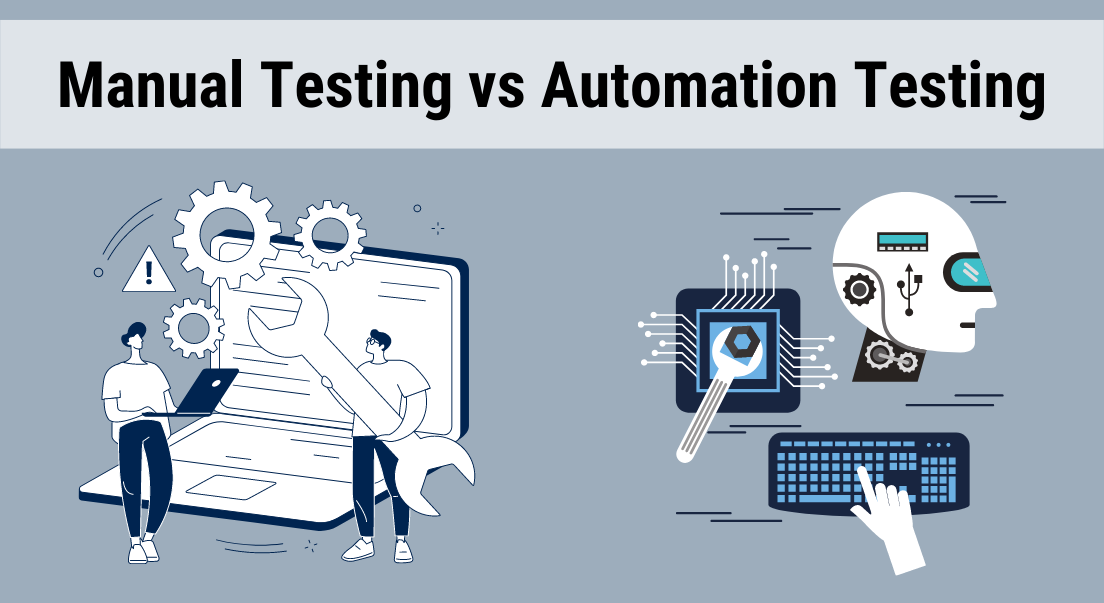Automation Testing Frameworks: Simplifying Complicated Testing Situations
Automation Testing Frameworks: Simplifying Complicated Testing Situations
Blog Article
Ensuring Success in Automation Examining: Trick Metrics, Challenges, and Solutions Every QA Group Ought To Know
In the world of software program high quality assurance, the landscape of automation screening is ever-evolving, requiring a careful method to make certain smooth operations. Secret metrics act as the compass assisting QA groups with the huge surface of test automation, losing light on progress and areas for improvement. Challenges impend huge, commonly casting shadows on the course to success. By recognizing these difficulties and implementing reliable remedies, QA teams can navigate via complexities with finesse. The trip to understanding automation screening is led with nuances that need a keen eye for surveillance, analysis, and continual improvement. automation testing. As the market pushes forward, the mission for ideal performance in automation screening stays a consistent pursuit, advising QA teams to outfit themselves with the expertise and methods necessary for accomplishment.
Value of Trick Metrics
Comprehending the significance of vital metrics is vital for examining the performance and effectiveness of automation testing procedures. Trick metrics serve as measurable procedures that provide important understandings into numerous facets of the screening process, such as examination coverage, test execution time, flaw density, and examination situation performance. By analyzing these metrics, QA groups can recognize bottlenecks, inadequacies, and locations for enhancement within their automation testing structure.
One essential element of key metrics is their capability to track development and keep track of the overall wellness of the screening procedure (automation testing). They enable stakeholders to make enlightened choices based on data-driven understandings, which can result in extra reliable testing techniques and much better resource allocation. Furthermore, vital metrics can help teams established practical objectives, determine the success of automation initiatives, and show the ROI of automation testing efforts

Typical Challenges Faced
Challenges generally run into in automation screening procedures can significantly influence the total performance and effectiveness of QA groups. One of the major challenges is the selection of the right test instances for automation. Not all examination situations appropriate for automation, and picking the incorrect ones can result in lost time and resources. In addition, keeping examination manuscripts can be an overwhelming task, especially as the application undergoes constant modifications. Test script upkeep requires continual updates and adjustments to ensure they reflect the present performance accurately. Another usual difficulty is the first financial investment needed for setting up automation structures and tools. This can be an obstacle for some companies, particularly smaller ones with minimal budgets. Automation screening may not cover all facets of screening, such as functionality and customer experience testing, which still need hand-operated treatment. Getting over these difficulties calls for appropriate preparation, calculated test case selection, durable upkeep procedures, sufficient sources, and a clear understanding of the limitations of automation screening.
Efficient Solutions for Difficulties
To deal with the barriers come across in automation screening, executing efficient services is essential for enhancing the performance and performance of QA groups. One find out vital service is to buy robust training programs for QA groups to guarantee they have the required skills to properly utilize automation tools. Training can link knowledge gaps, improve understanding of automation structures, and enhance scripting capabilities, inevitably causing extra efficient test development and execution.
Another important remedy is to develop clear interaction networks within the QA team and with other stakeholders, such as programmers and job supervisors. Efficient communication assists in lining up expectations, sharing development updates, and without delay dealing with problems or obstructions that may occur during the automation testing process.

Surveillance and Analysis Strategies
Carrying out effective surveillance and evaluation methods is critical for ensuring the success and efficiency of automation screening procedures. By making use of surveillance tools, QA groups can track the performance of examination scripts, recognize bottlenecks, and pinpoint locations for enhancement. Real-time surveillance permits fast discovery of issues, allowing fast reaction and resolution. In addition, evaluating examination results and metrics offers beneficial understandings into the high quality of the software program being tested and the efficiency of the testing technique.
One key strategy in tracking and evaluation is making use of control panels that settle relevant metrics and KPIs in an aesthetically easily accessible format. These dashboards offer a thorough review of test implementation status, Visit Website examination insurance coverage, defect patterns, and other essential info. On a regular basis examining and evaluating these control panels can help QA groups make notified choices, prioritize tasks, and optimize screening initiatives.
Additionally, carrying out automated informs and notifications based upon predefined thresholds can enhance proactive tracking and prompt treatment. By establishing informs for performance deviations or test failures, groups can address concerns quickly and prevent them from escalating. Generally, surveillance and analysis strategies play an important role in guaranteeing the effectiveness and success of automation screening initiatives.
Constant Enhancement Methods
Enhancing the effectiveness of automation testing processes requires the consistent refinement of techniques and approaches. Continuous improvement methods are pivotal for QA groups to adjust to progressing technologies and deliver premium software. One key strategy to improving automation screening processes is to carry out normal reviews and retrospectives. By analyzing previous screening cycles, groups can determine bottlenecks, inadequacies, and areas for enhancement. Implementing responses loops and including lessons found out into future testing frameworks can yield significant enhancements with time.

Verdict
To conclude, it is important for QA teams to recognize the essential metrics, obstacles, and remedies in automation screening to make sure success. By very carefully monitoring and analyzing data, executing efficient solutions to common difficulties, and continually improving methods, QA teams can optimize their testing procedures and provide high-grade software. Adhering to these techniques will inevitably result in more efficient and reliable automation screening techniques.
By evaluating these metrics, QA groups can determine bottlenecks, inadequacies, and locations for improvement within their automation testing structure.
Furthermore, key metrics can aid teams set reasonable objectives, measure the success of automation initiatives, and demonstrate the ROI of automation screening initiatives.
Challenges frequently come across in automation testing procedures can significantly affect the you can check here total efficiency and performance of QA teams. Automation testing may not cover all elements of screening, such as usability and customer experience testing, which still need hands-on intervention.In final thought, it is essential for QA teams to recognize the crucial metrics, challenges, and solutions in automation screening to make certain success.
Report this page